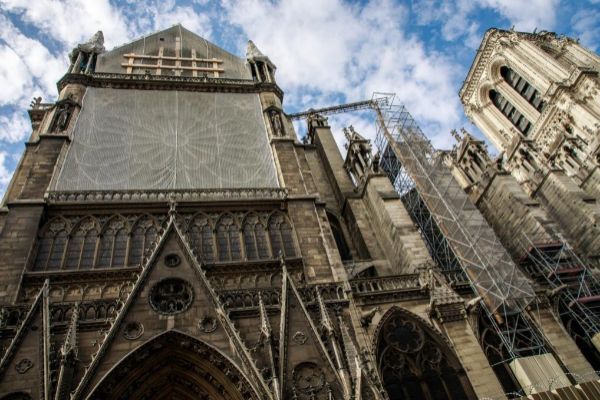- France: A large fire destroys the roof and the central spire of the Notre Dame cathedral
Almost four months after the fire that devastated the Notre Dame Cathedral on April 15, Parisians are worried about the consequences that high levels of lead in the neighborhoods around this Gothic jewel located in The heart of Paris
The fire melted about 400 tons of lead from the roof and the arrow of the cathedral and released large amounts of toxic particles that settled in the streets and surrounding buildings, causing, according to the local newspaper Le Parisien , "an unprecedented health crisis" .
Anne Souyris, head of Health of the City of Paris, invited on Tuesday "all people who live or work 500 meters from Notre Dame to have a blood test to measure the level of lead so that everyone is more quiet". The analyzes carried out so far on children living near the cathedral have revealed two cases in which blood lead rates were high and another 16 that are at the surveillance threshold.
A simple blood test can detect saturnism or lead poisoning . If blood lead levels are high, this person should be treated for the removal of this heavy metal from their body. According to the Mayo Clinic in the United States, "children under 6 are especially vulnerable to lead poisoning, which can seriously affect physical and mental development. At very high levels, lead poisoning can be deadly ."
The city council of Paris also announced that tomorrow a specialized company will resume decontamination of the Île de la Cité, the island in the middle of the Seine river where the cathedral of Paris is located.
"We are going to close the streets and the square (in front of the cathedral), we are going to cover the asphalt with an absorbent gel (to capture the lead) and then we will remove it," Souyris explained in an interview with the radio station and RMC television.
The head of Health of the City of Paris also wanted to send a message of tranquility to the parents of children in nurseries and schools near the cathedral. Since April 16, work has been carried out to thoroughly clean the courtyards and lead classes, Souyris promised that everything will be ready in these centers by September 2, date of the return to school in France. "If there is the least risk, we will close," added the Councilor for Health.
The prefecture of Paris temporarily suspended the works of Notre Dame at the end of July for a few days to review the protocols for the protection of workers against lead. And two schools close to the cathedral that held summer camps were closed when high rates of lead concentration were detected.
The works of Notre Dame are expected to resume in mid-August, once the decontamination of the area has been completed in order to avoid any spread of toxic particles.
At the end of July, the Robin des Bois association (Robin Hood) filed a complaint for lead contamination caused by the Notre Dame fire in Paris. This environmental association accused the French authorities of having been slow to react , of not having informed the neighbors and workers well and of lack of transparency, something that both the city council and other responsible agencies deny.
The French union CGT and the association of families victims of Saturnism (AFVS) called for the cessation of the works of Notre Dame and "the total confinement" of the cathedral until it can be guaranteed that there is no danger to the health of workers and the neighbors. According to them, there are peaks of lead contamination both in the surroundings of the cathedral and in the neighborhoods adjacent to the monument, so they consider that a wider decontamination than is currently planned would be necessary. They also call for the creation of a health surveillance center for those affected.
According to the criteria of The Trust Project
Know more- Science and Health
Toxicology Spaniards are Europeans with more mercury in their body
Negligence The biggest mistake in fertility history: "I was robbed of the possibility of giving birth to my own son"
Species'Rugulopterix okamurae ', the Asian seaweed that invades the beaches of Tarifa

